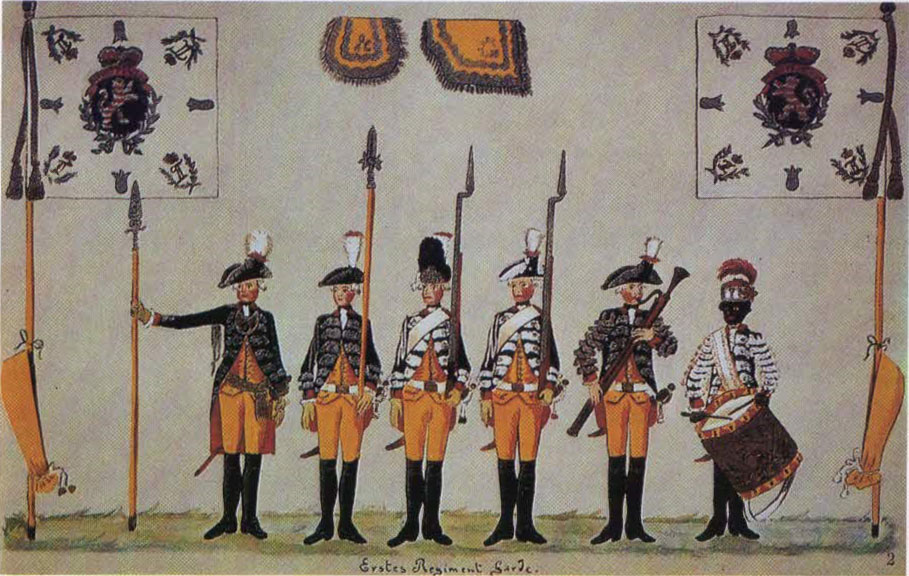A Black Drummer Boy in a Hessian Guards Regiment (c. 1780)
Abstract
In the 17th and 18th centuries, it was considered fashionable in European aristocratic houses to have a Black musician at court. The status of the Hofmusikant, typically a trumpeter or drummer, depended on his function and integration into the courtly context. Towards the end of the 17th century, it became increasingly common for Black musicians to be attached to German armies. This was at least partially attributable to changes in military tactics that called for larger bodies of troops to advance rhythmically in accordance with sharp, accented sounds.
During the American Revolutionary War (1775–1783), German soldiers from Hesse-Kassel fought on the side of the British. Over the course of the war, Hessian regiments either voluntarily recruited or forcibly captured formerly enslaved Blacks to join their forces. After the war, about one hundred of these Black Hessians, as they came to be known, returned to Hesse with their regiments. Some of these men and boys were eventually recognized by the regent as legally free subjects. This designation, however, was specific to individuals and did not change the principal interpretation of the world in terms of skin color or ethnicity.
The following image shows the uniforms of the 1st Hessian Guards Infantry Regiment, c. 1780. It is unclear where or how the Black drummer boy on the right became attached to the regiment.
Source

Source: Uniforms for the 1st Hessian Guards Infantry Regiment, c. 1780. Kassel, Staatliche Kunstsammlungen. Repinted in Peter Martin, Schwarze Teufel, edle Mohren. Hamburg: Junius Verlag, 1993, p. 344, Fig. 19.